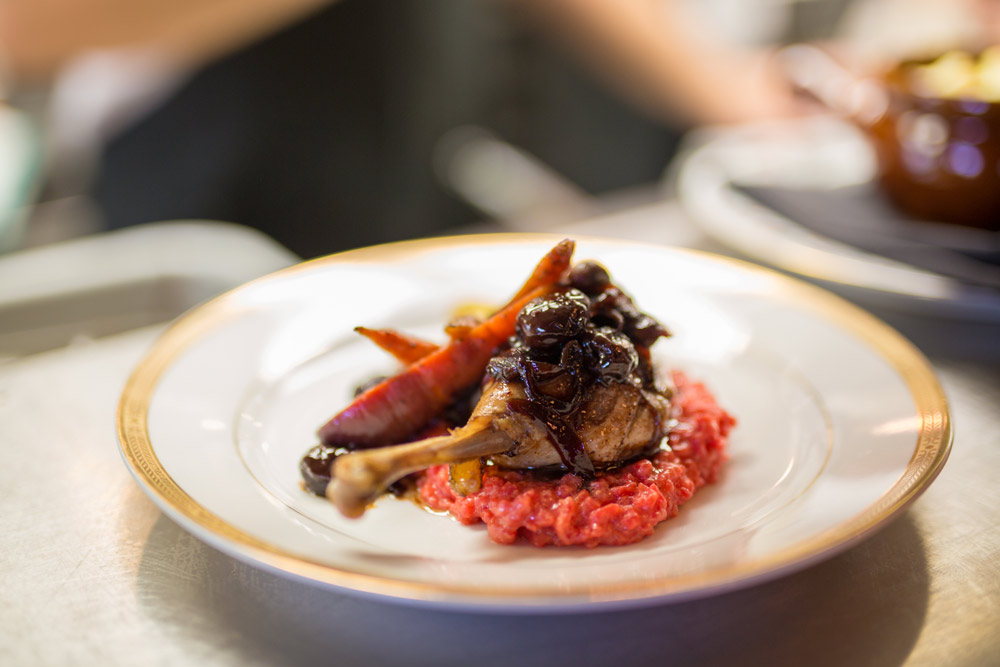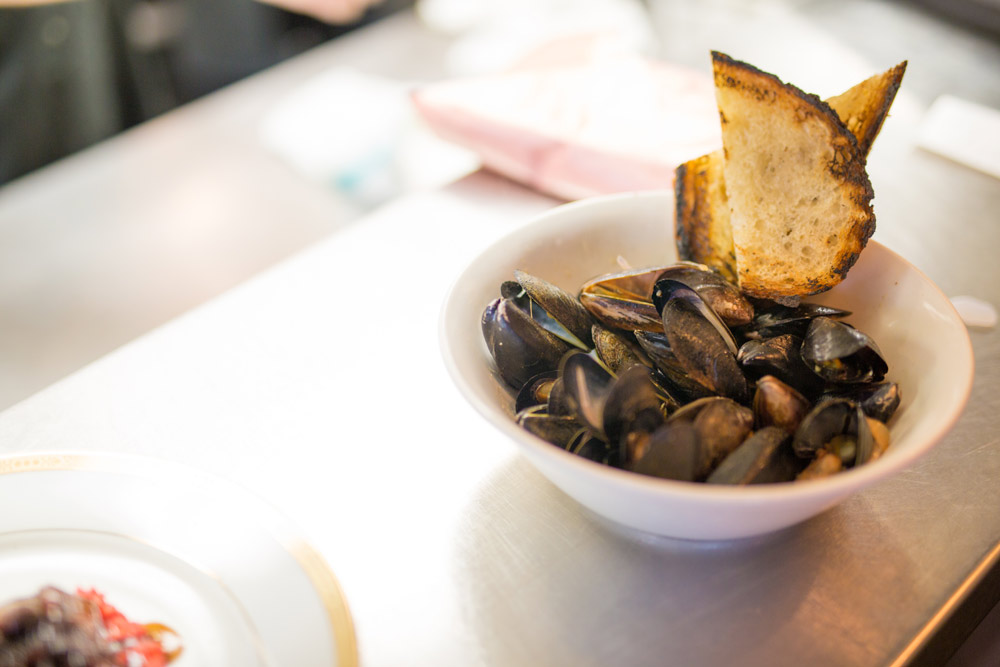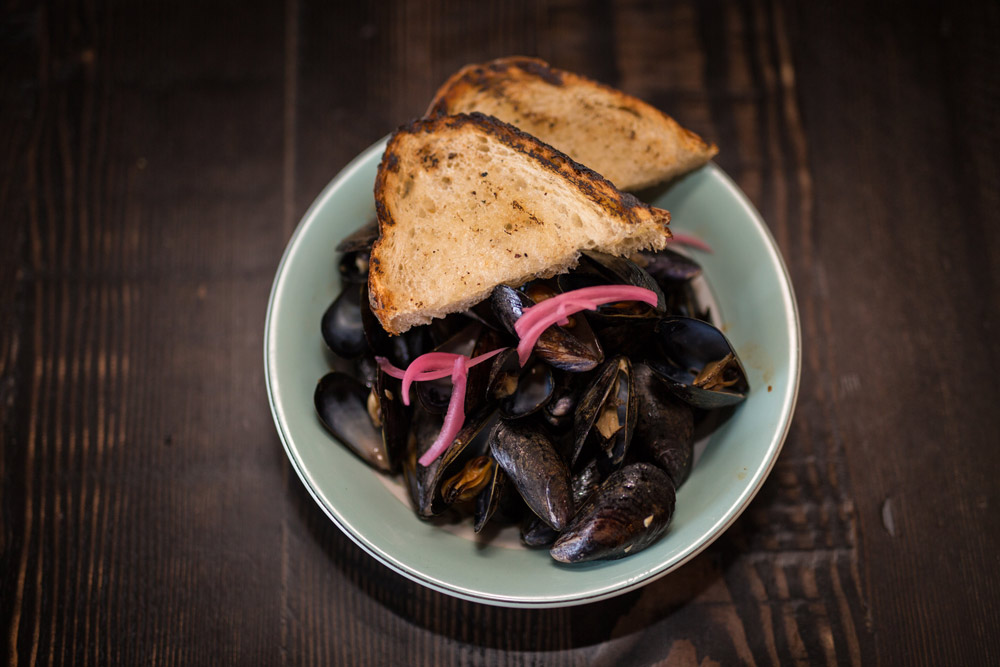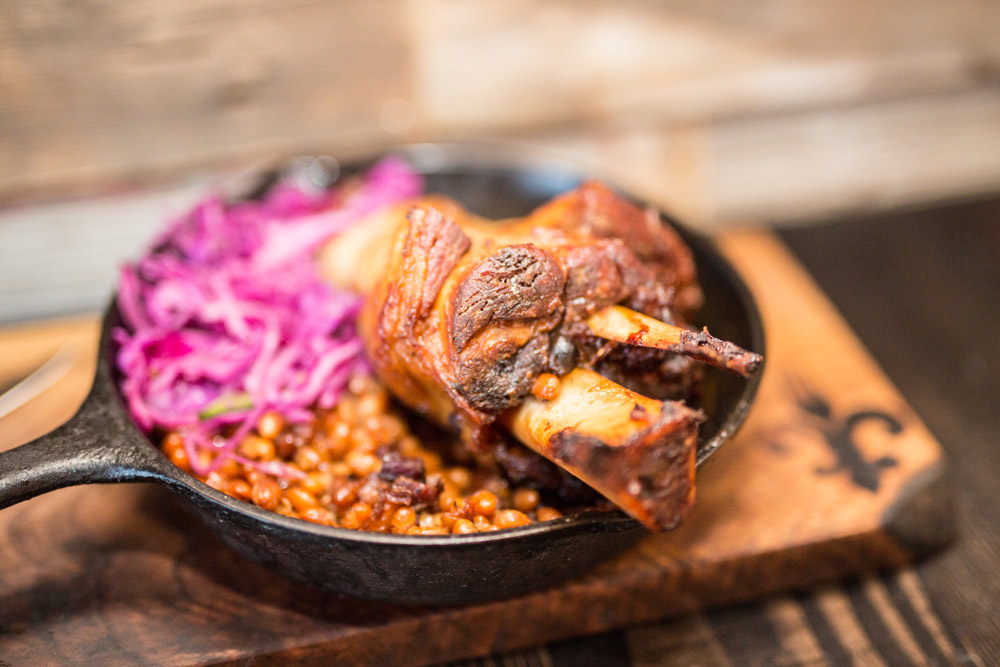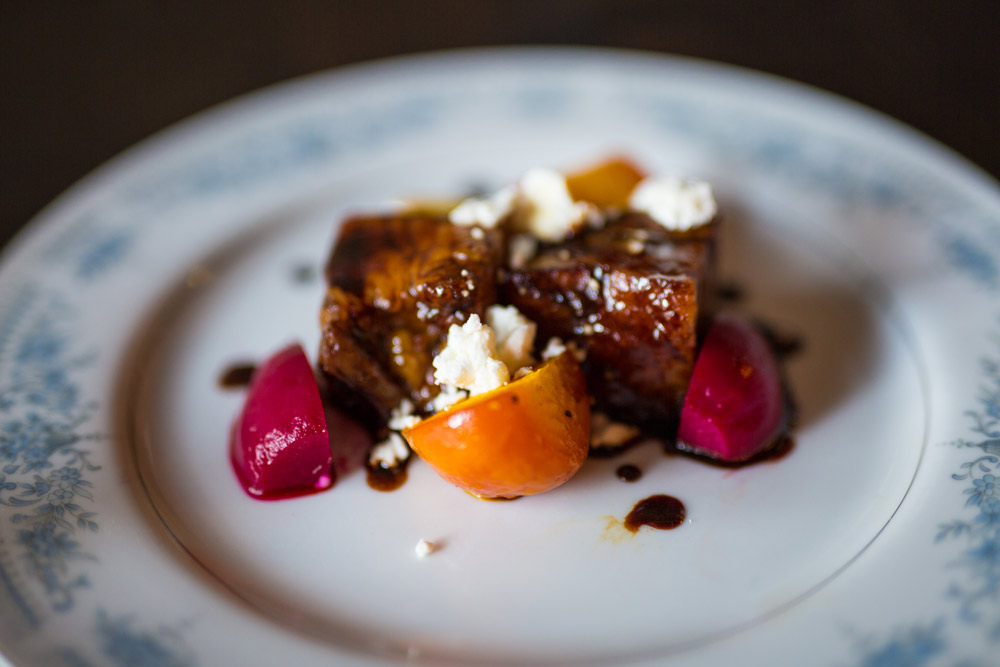Here you’ll find all the instructions you need to bake your own delicious sourdough. The starter (also known as the mother) is a natural probiotic culture that we’ve kept alive for over 5 years - and can be split off and shared with friends and family.
We ask that if you would like some of our Mother starter at Chartier to simply give us a call at least 2 days in advance at (780) 737-3633 and we’ll gladly set some aside for you!
Sharing this recipe for bread is sharing a little piece of Beaumont for you in your community, and we hope that as you break bread with your loved ones you feel the spirit that we’re sending it with; a spirit of love, connection, and respect.
Tools/Ingredients Needed
All Purpose Flour
Whole Wheat Flour
Sourdough Starter x 17g
Salt
Water
Cast Iron Pot/Combo Cooker or Pizza Stone or baking sheet
Spray bottle filled with cold water for steam generation
Bread lame for scoring bread or other small very sharp blade
Thermometer
Tall Clear 1L container
Oven Mitts
Small stand mixer
Refreshing/Feeding the Starter
The starter is the microbial culture you continuously “feed” so that it is high in microbes & good bacteria so that it is ready for when you are prepared to make bread. Feel free to substitute any other fun name for your starter (we call ours “Mother”); ex: Little Bread Rising Hood, Carrie Breadshaw, Bread Pitt, Bob.
We did not include a recipe for maintaining a starter here, just for how to make a loaf of bread assuming you already have a starter.
Sourdough Levain Recipe
You use the starter to make a levain and allow it to sit at room temperature for about 12 to 16 hours and then use the levain for making the bread, not the starter .
Although they are essentially the same, a starter is the sourdough culture you keep alive and feed every 12 hours and only take a little bit from it to make a levain to make sourdough bread so that you always have some starter continuously going. Confusing, we know.
Alternatively if you do not want to be constantly feeding a starter and keeping it alive you can just get some sourdough Starter from Chartier and just use that straightaway in your bread recipe and skip this part of making a levain and maintaining a starter! Easy.
Combine the starter with the water. Then mix in the flours until just combined. Allow to sit at room temperature for 8 to 12 hours then it is ready to be used for bread. Place in a container with a lid allowing for it to grow 3 to 4 times its size.
Example schedule: Mix at 7 pm in the evening and it will be ready by 7 am the next morning to be used for bread making. That is the peak level of microbial activity that you want when you use it to make sourdough. It should be nice and bubbly.
Sourdough Bread Recipe
You can do this recipe in cups or in measured weight. We always recommended the measured weight if you have a scale to do so!
Total Hours needed to make bread: Approximately 4 hours if baking the same day
Using a stand mixer, add the starter, both flours, and water to the mixer. Do not add the salt! Mix for about 2 minutes on low speed just until there aren't any dry flour spots. If mixing by hand, it should take around 1 minute. The dough will be very shaggy and lumpy looking at this time. You don’t want a smooth dough yet! Cover the bowl with plastic wrap and leave it in a slightly warm spot for 30 to 60 minutes.
Sprinkle in the salt and mix for 3 minutes on low speed with a stand mixer. Then speed up to a medium speed for about 5 minutes or until dough becomes a smooth ball. If it seems too stiff, gradually add 1 tbsp of water at time until it becomes a nice soft dough. If it seems too wet after, you can add 1 tbsp of flour at a time until it becomes just a little stiffer. If mixing by hand, add the salt and use a twisting/ pinching motion until the salt dissolves into the dough. Then use a folding motion and mix for 10 minutes until the dough is a smooth ball.
Place rounded dough in a lightly oiled bowl and cover with plastic wrap and place in a warm area for 30 minutes. If you have a thermometer you can check the temperature of the dough. It should be about 25C. If it is warmer than that, place it in a cool area for the next step.
Allow to sit for 30 minutes and then lightly stretch the dough and fold the dough over itself to build tension until the dough won’t allow you to stretch anymore, be gentle, no force! This is the first of 3 folds.
Allow to rest for another 30 minutes then repeat the above folding process. This is the 2nd fold
Fold again for the 3rd and final fold and allow to rest for 30 minutes.
Get the oven ready by turning it to 500F. If you have a cast iron pot/combo cooker you can place it in the oven to heat up. Or If you have a pizza stone, place that in the oven to warm up at this time.
Pour dough onto a lightly floured table. Fold the edges in towards the center until the dough builds tension and holds its round shape. Place a linen cloth in a medium sized kitchen bowl and dust it lightly with flour. Place dough delicarly into this and cover.
Proof until nearly doubled in size and dough leaves a slight impression when gently poked. The dough should hold the impression but still bounce back slowly. The dough is now ready for the oven!
If using a cast iron pan or pot: bring out the oven and gently slide the loaf into it. Make a few cuts on the top of the loaf to allow it to expand in the oven. Place the lid on the pot and put into the oven. Immediately drop the oven temperature to 460F and bake for 20 minutes. Then remove the lid and bake for another 15 to 20 minutes until deep golden brown.
If using a pizza stone: Keep the pizza stone in the oven. Gently score the bread with the lame or sharp knife for a few cuts. Slide the bread from the sheet pan onto the stone. Using a small water bottle, spray generously all over the loaf and the oven to create steam. Quickly close the oven door. Immediately turn the oven temperature down to 460F. Set a timer for 10 minutes and spray more water into the oven. Bake for another 25 to 30 minutes until deep golden brown.
If using a sheet pan: Gently score the bread with the lame or sharp knife for a few cuts. Place sheet pan into the oven and using a small water bottle, spray generously all over the loaf and the oven to create steam. Quickly close the oven door. Immediately turn the oven temperature down to 460F. Set a timer for 10 minutes and spray more water into the oven. Bake for another 25 to 30 minutes until deep golden brown.
Allow the dough to cool for at least 10 minutes before cutting into.
OPTIONAL OTHER USES
Just substitute in 10% starter (of your total ingredients weight. Ex: total recipe = 100g, and 10% of that is 10g) into your favorite recipe for ideas listed below!
Remove 5% of the total flour
Remove 5% of the total liquid.
And remove half of your total dry yeast if the recipe contains any yeast.
Scones
Bannock
Buns
If for any reason you feel the loaf you made doesn't look quite right at the end, just flatten it out and top with sauce & other toppings and use as a pizza crust or flatbread!
Eat and ENJOY!




